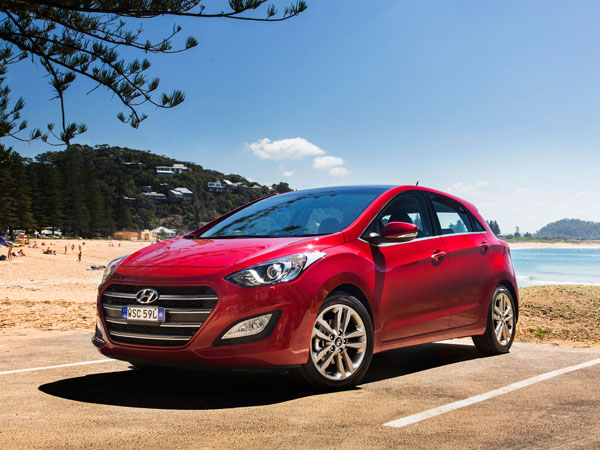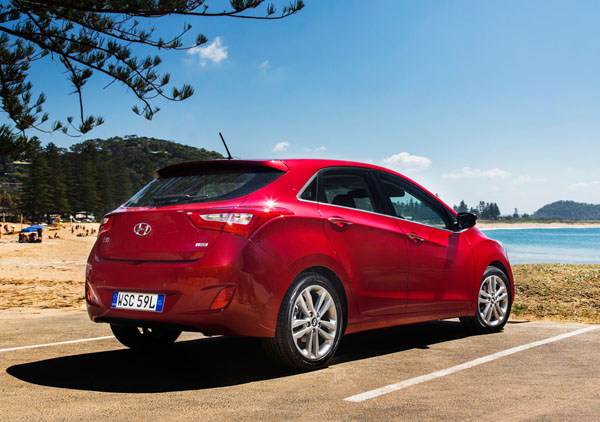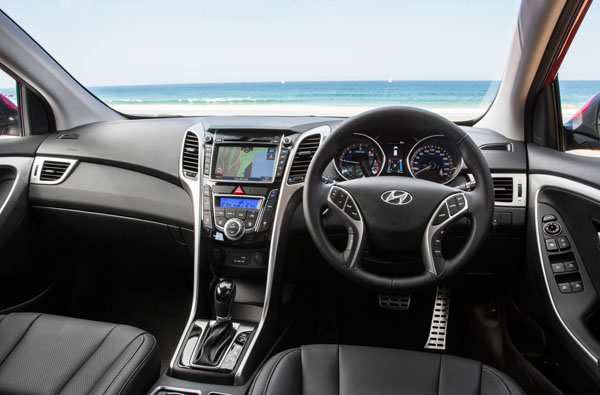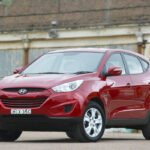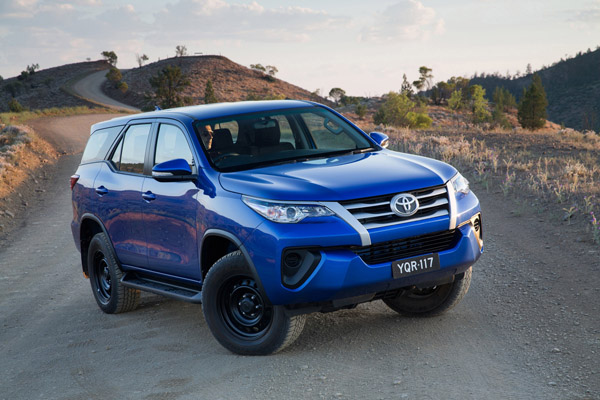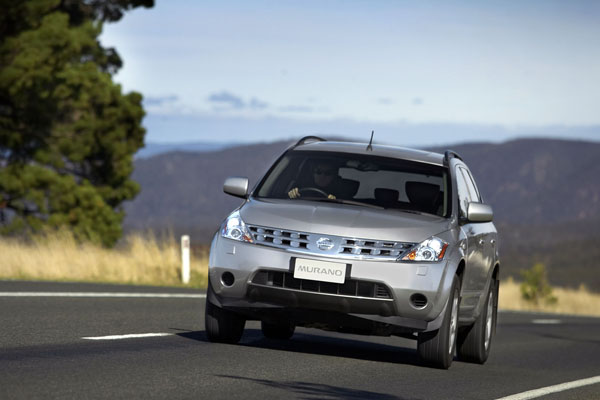Hyundai’s i30 has been shaking things up in the sales race for a few years, now more than ever – in June 2015, it beat the mighty Corolla onto the top step. That’s guaranteed champagne territory for the ever-ambitious South Korean car maker.
On cue, there’s been a mid-life refresh for the hatch and wagon, bringing a new transmission to a package that has had a lot of work done under the skin to help maintain the momentum.
VALUE
From the $20,990 manual 1.8-litre petrol i30 Active, it’s a long stretch to the $34,490 Elite 1.6-litre diesel, our test car.
Standard on the Premium is a six-speaker stereo with Bluetooth and USB, dual-zone climate-control, reversing camera and rear parking sensors, keyless entry and start, cruise control, sat-nav, auto bi-xenon headlights, auto wipers, heated front seats, leather trim, panoramic glass roof, auto-parking (parallel and bay).
The only option available is $495 premium paint.
DESIGN
Not much has changed on the outside. Hyundai’s i30 remains a handsome thing, with the usual multiple influences with a whopping great grille up front. The Premium adds a bit of chromey bling, 17-inch alloys and the glass roof.
The Premium also picks up LED tail lights and puddle lamps.
Inside is pretty much as was too, with some changes in materials and in the Premium the heated and cooled seats. The i30 is well made and the interior is an improvement on our recently (and reluctantly) departed i30 Tourer long-termer. There’s also a set of alloy pedals for a bit of extra tizz.
The interior has plenty of storage, including a cooled glovebox, roof-mounted sunglasses holder, drink holders front and rear and a range of hooks and nooks for bits and pieces.
The dashboard is largely the same.The information screen between the dials has gained a few more pixels to make it easier on the eye.
Some of the changes include a slight toning-down of some of the contrasting finishes.
SAFETY
Seven airbags, ABS, stability and traction control, lane departure warning, brake force distribution and brake assist.
The i30 scored five ANCAP stars.
ENGINE / TRANSMISSION
The driveline is Hyundai’s from cam covers to driveshaft. The 1.6-litre turbo-diesel continues in the Series II, with 100 kW and 300 Nm. The front wheels are driven through the new seven-speed dual clutch transmission, delivering a claimed 4.9l/100km and a mildly surprising 0-100 km/h time of 8.0 seconds.
We saw 5.9L/100km in a 70/30 mix of city and country driving which is pretty decent going.
INFOTAINMENT
The 7.0-inch touchscreen powers the six-speaker stereo and looks after the sat-nav system. Neither will set the world alight for brilliance but are as good as can be expected. Both are pretty much unchanged from the previous versions and are easy to use.
Oddly, only the Active and Active X have Pandora internet radio for Android or iOS devices.
DRIVING
This is where all the hard work becomes apparent. There wasn’t a lot wrong with the Series I, but it didn’t feel completely sorted when you pushed it a bit. There were what felt like lots of detailed changes throughout its life, but there was a huge difference between the Korean and Euro-sourced cars.
The Tourer and three door enjoyed the multi-link rear suspension whereas the five-door has to make do with torsion beams. As with all newly-released Hyundais, the car has been given a good going over by the local suspension team, improving both the handling and the overall ride.
The new suspension tune gives a much better driving experience, with far less understeer than the old car, with the heavy feel of the diesel banished. It’s probably a tad stiff in the rear for some tastes, probably an inevitable part of the trade-off for the improved dynamics.
Steering is improved with a new electric steering setup but for some reason the gimmicky Flex Steer persists (stick in Normal and forget about it, it’s fine as it is).
The stability and traction systems also work with you rather than against and the new transmission is almost as good as the six-speed. The drive-by-wire throttle is still way too slow to react, but this isn’t a hot hatch (there’s one coming, though).
SUMMING UP 3.5/5
Hyundai’s iterative approach to mid-life refresh is almost certain to go largely unnoticed by Australia’s small hatch buyers, they’ll buy them no matter what. Hyundai doesn’t sell too many Elites but at this price, that’s no surprise. It’s loaded with stuff but the diesel engine and new dual-clutch are solid reasons to give the i30 a chance.
LIKES: new dual-clutch transmission very impressive for a first go,
DISLIKES: could do with a better stereo head unit




